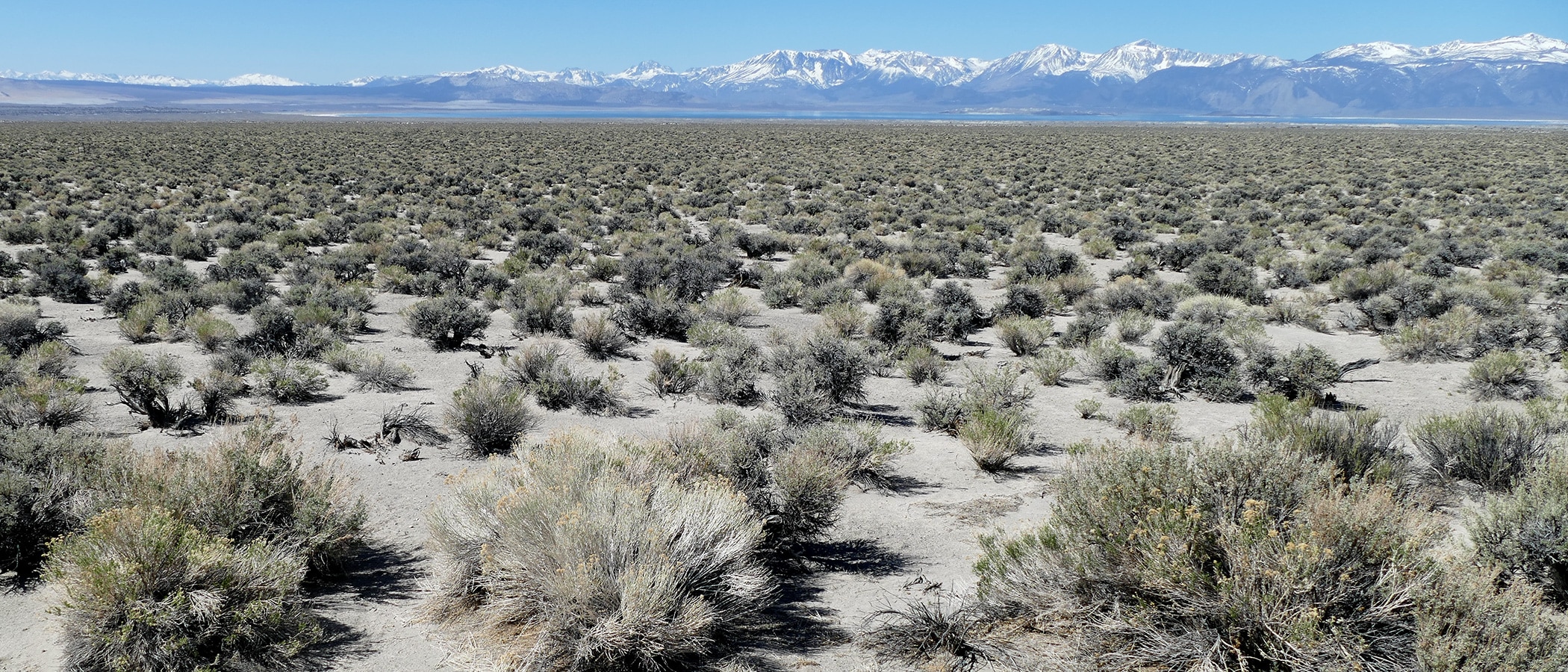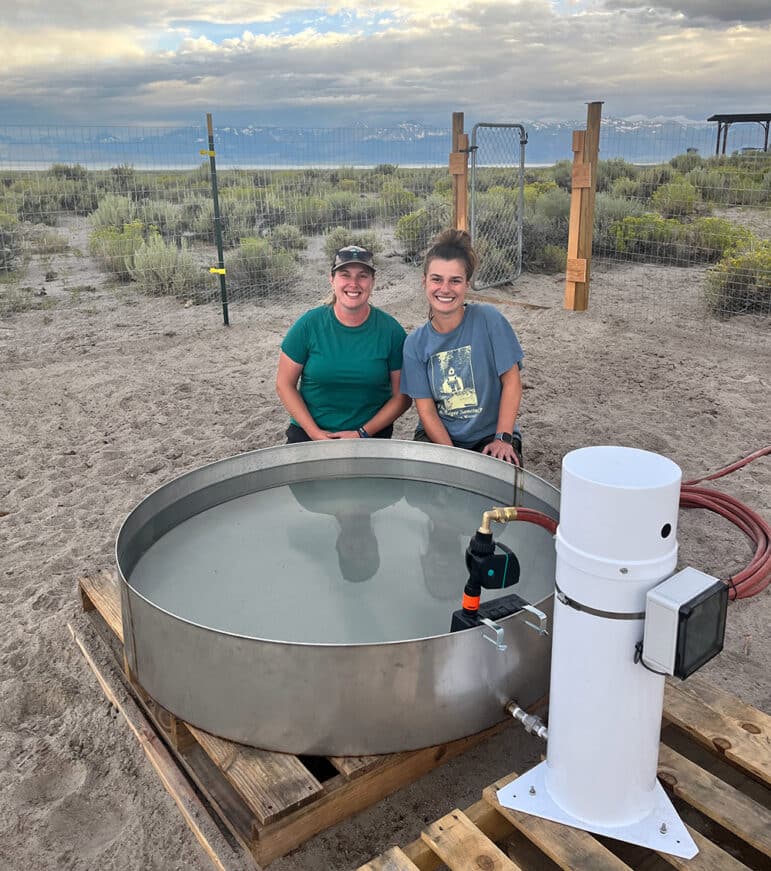

As an endorheic—or terminal—lake with no outlet, Mono Lake loses water naturally only through evaporation. Evaporation is a complex process, influenced by radiation, wind, temperature, and humidity. The rate of evaporation varies across seasons and over the lake’s surface. With no long-term observational data of evaporation at Mono Lake, the effect of evaporation on the water balance is not well understood. Longtime Mono Lake Committee hydrogeographer Peter Vorster studied evaporation here for a short period in the early 1980s. He determined Mono Lake loses nearly four vertical feet of water to evaporation each year. With a more current understanding of evaporation specifically at Mono Lake, the Committee can better estimate lake level fluctuation.
In 2023, researchers from the University of Michigan installed an evaporation pan on the east side of Mono Lake as part of a larger study examining Mono Lake hydrology and geochemistry. The research team worked with the Committee to site the pan on property donated to the Committee in 2021. The team carefully cleared and fenced off the study area, installed the four-foot diameter pan and associated instrumentation, and navigated the unique challenges of the unusually remote location. The instruments attached to the pan measure water lost to evaporation, while accounting for water added by rainfall. Because water in a metal pan evaporates more quickly than lake water, an established calibration term is applied to the data to calculate lake evaporation. In the case of Mono Lake, the calculation must also consider the moderating effect of salinity as saline water evaporates more slowly than freshwater. Establishing an evaporation data collection system at Mono Lake is long overdue. In the short term, we hope to refine our hydrology models and lake level simulations. Over time, the data may provide insight into how evaporation is changing with a warming climate.
This post was also published as an article in the Winter & Spring 2024 Mono Lake Newsletter. Top photo by Elin Ljung.
